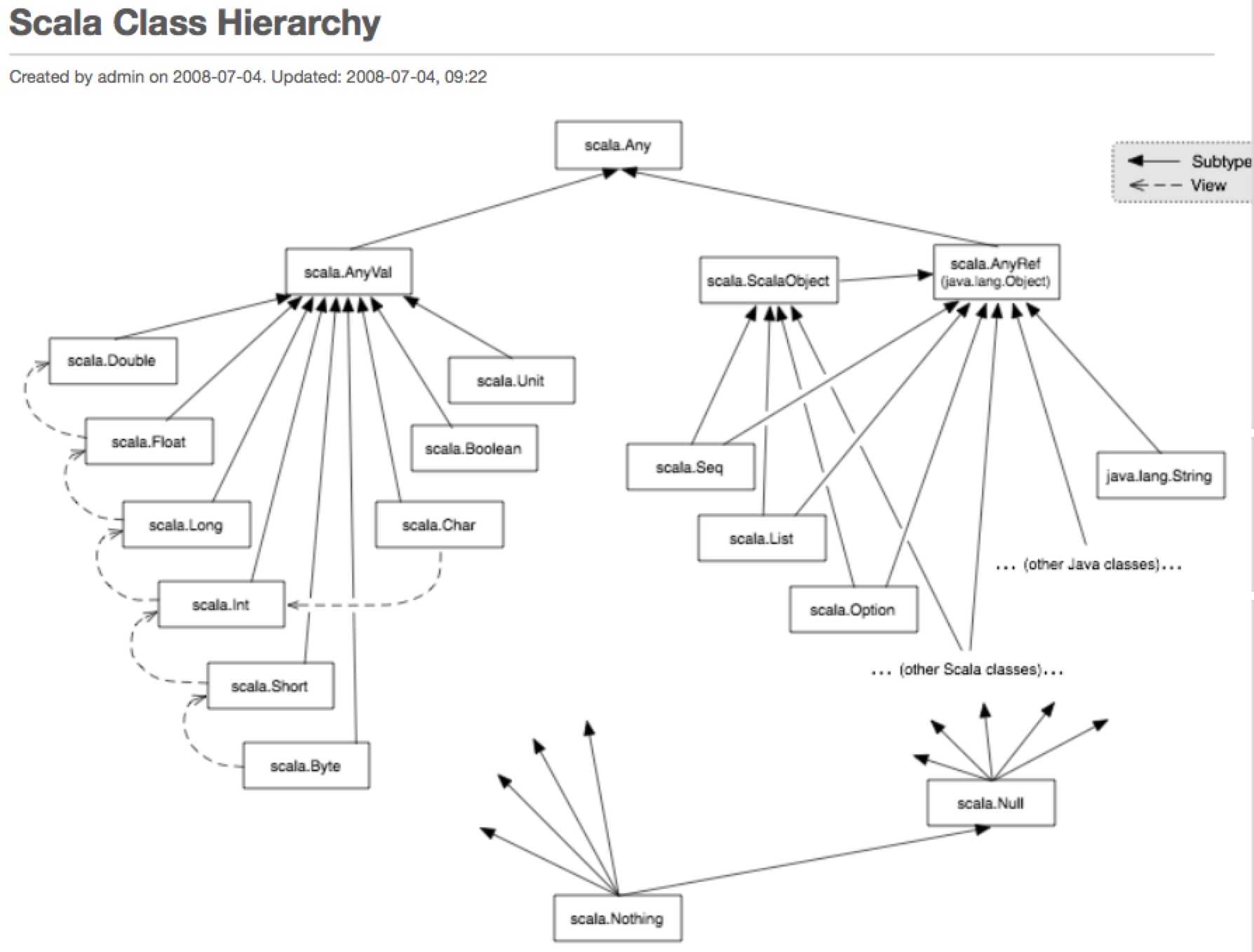标签:trait sys ima tom man matching tip nes 技术分享

(x: Int) => x + 1
This is a shorthand for the following anonymous class definition:
new Function1[Int, Int] {
def apply(x: Int): Int = x + 1
}
It is also possible to define functions with multiple parameters:
(x: Int, y: Int) => "(" + x + ", " + y + ")"
or even with no parameter:
() => { System.getProperty("user.dir") }
class Decorator(left: String, right: String) {
def layout[A](x: A) = left + x.toString() + right
}
object FunTest extends Application {
def apply(f: Int => String, v: Int) = f(v)
val decorator = new Decorator("[", "]")
println(apply(decorator.layout, 7))
}
In this example, the method decorator.layout is coerced automatically to a value of type Int => String as required by method apply. Please note that the method decorator.layout is a polymorphic method(i.e. it abstracts over some of its signature types) and the Scala compiler has to instantiate its method type first appropriately.
object FilterTest extends Application {
def filter(xs: List[Int], threshold: Int) = {
def process(ys: List[Int]): List[Int] =
if (ys.isEmpty) ys
else if (ys.head < threshold) ys.head :: process(ys.tail)
else process(ys.tail)
process(xs)
}
println(filter(List(1, 9, 2, 8, 3, 7, 4), 5))
}
object CurryTest extends Application {
def filter(xs: List[Int], p: Int => Boolean): List[Int] =
if (xs.isEmpty) xs
else if (p(xs.head)) xs.head :: filter(xs.tail, p)
else filter(xs.tail, p)
def modN(n: Int)(x: Int) = ((x % n) == 0)
val nums = List(1, 2, 3, 4, 5, 6, 7, 8)
println(filter(nums, modN(2)))
println(filter(nums, modN(3)))
}
Note that method modN is partially applied in the two filter calls; i.e. only its first argument is actually applied. The term modN(2) yields a function of type Int => Boolean and is thus a possible candidate for the second argument of function filter.
标签:trait sys ima tom man matching tip nes 技术分享
原文地址:http://www.cnblogs.com/wttttt/p/7466259.html